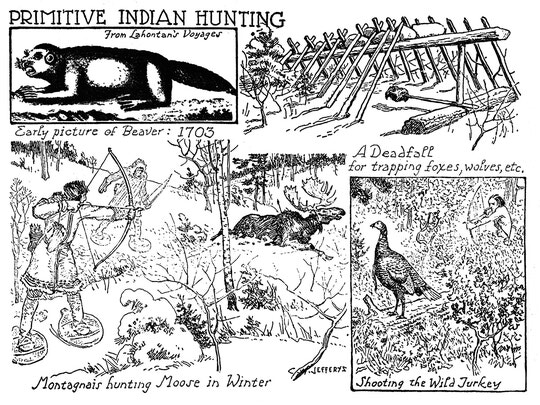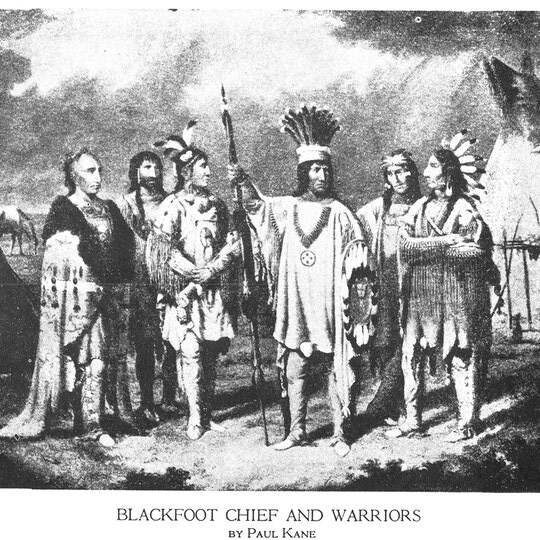The Picture Gallery of Canadian History Vol. I
Title: The Picture Gallery of Canadian History Vol. I
Author: C. W. Jefferys
Publisher: Toronto, Ryerson, 1942. 262 p. Illus.
Buy a copy online at AbeBooks
The first section of The Picture Gallery of Canadian History explores illustrations of early Indigenous life in Canada based on accounts from early explorers, missionaries, and archaeological findings.
Locations of Eastern Indian Tribes about the time of Cartier. Based on Map of Geological Survey and National Museum, Canada
Western Indian Tribes in Early Eighteenth Century. Based on Map of Geological Survey and National Museum, Canada
Early picture of Beaver: 1703 (From Lahontan's Voyages)
A Deadfall for trapping foxes, wolves, etc.
Montagnais hunting Moose in Winter
Shooting the Wild Turkey
Indians, hidden under wolf skins, crawl near enough to shoot them with bows and arrows.
Early pictures of Bison. From Hennipin's travels, 1683
Hunting buffalo on snow shoes. Above drawings by George Carlin, about 1837.
Driving buffalo into a pound...
Fish Trap on a British Columbia River.
Bone Fish Spears.
Copper and Bone Fish Hooks.
Fish Trap Made of Willow Branches.
Using fish as fertilizer, breaking ground and sowing corn, women gathering corn
Camass flowers, collecting maple sap, Saskatoon berries, digging camass roots
Wild rice was an important cereal food among the Indians of the Great Lakes region.
Boiling in buffalo paunch, boiling in birch bark vessel, boiling in earthen vessel.
Cartier thus describes Hochelaga:
"The village is circular and is completely enclosed by a wooden palisade in three tiers like a pyramid. The top one is built crosswise, the middle one perpendicular...
There were two types: Angular and domed. The framework of the former was made by settings poles in the ground at an angle to form a cone. The other was made by tying branches together to form a dome. They were called wigwams.
Engravings in Champlain's "Voyages" Paris 1619
Girl in Dancing Costume
Mother carrying child
Woman pounding corn
Warrior with shield and body armor of sticks woven together
The beaming tool was so named because the skin to be dressed was laid over a smooth log or beam from which the bark had been stripped.
The clothing of the Indians varied according to the nature of the country which they inhabited. In addition to the skins of fur-bearing animals, which they used as robes, they also fashioned garments fitted to the body.
























